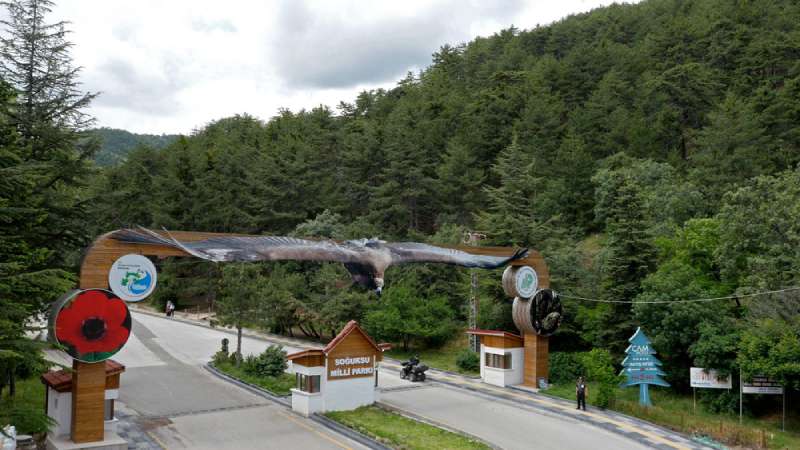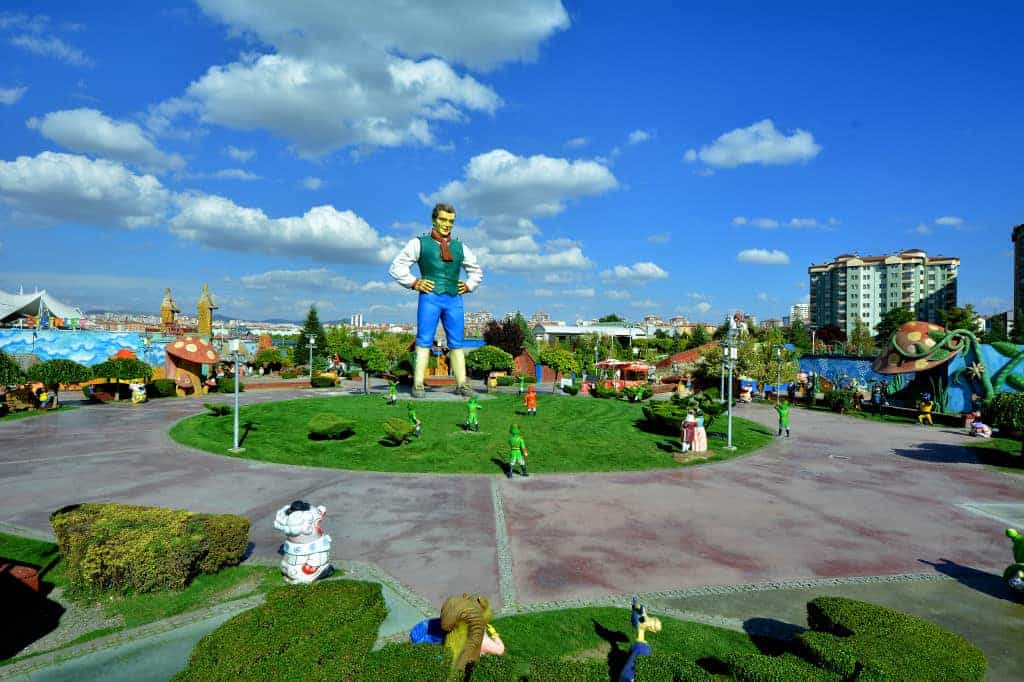Ankara is the capital of Turkey and the second most populous city in the country. Located in the Central Anatolia Region, Ankara is the center of the country both politically and administratively. After being declared the capital on October 13, 1923, the city entered a rapid development process and today serves as a significant center housing the Grand National Assembly of Turkey, ministries, embassies, and state institutions. Geographically inland and having a continental climate, Ankara experiences hot and dry summers, and cold and snowy winters.
With a historical background rooted in many civilizations such as the Hittites, Phrygians, Galatians, Romans, Byzantines, and Ottomans, Ankara possesses a rich cultural heritage. In addition to its modern urban structure, the city is notable for its Roman ruins, Ottoman-era buildings, and monuments from the Republican period. Also highly developed in the fields of education, arts, and culture, the city stands out with its museums, universities, theaters, and concert halls, making it an important cultural capital. With its historical identity and modern face, Ankara is one of Turkey’s dynamic cities.
1. Anıtkabir – The mausoleum of Mustafa Kemal Atatürk
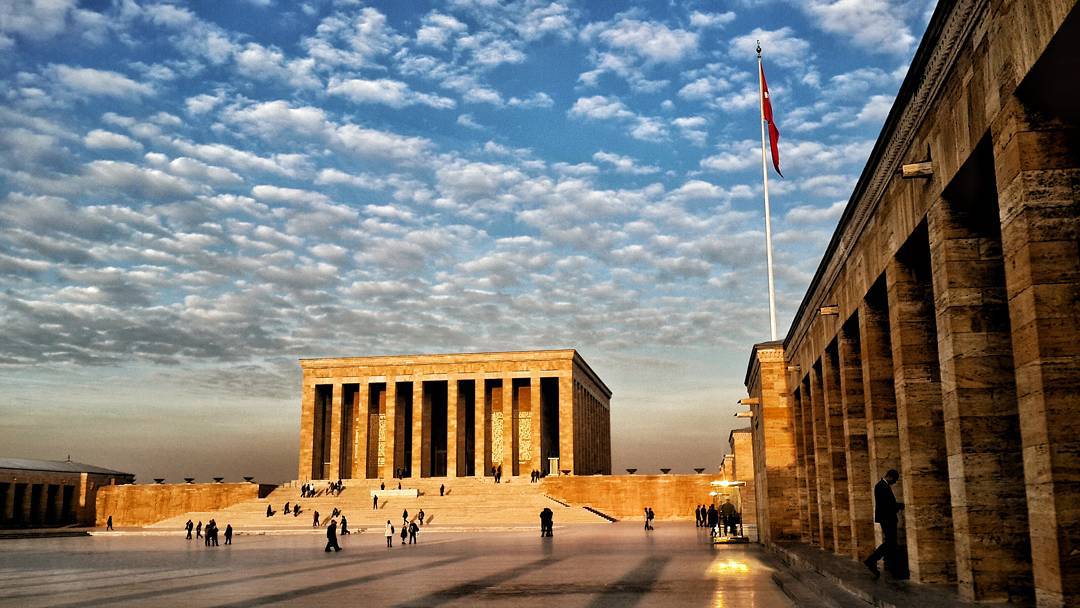
Anıtkabir is the mausoleum of Mustafa Kemal Atatürk, the founder and first President of the Republic of Turkey. Located on Rasattepe in the Çankaya district of Ankara, this monumental structure is one of Turkey’s most important symbols, both for its architecture and the significance it carries. Construction of Anıtkabir began in 1944, and the complex, consisting of four main sections, was completed in 1953 and opened to the public. Designed by architects Prof. Emin Onat and Orhan Arda, Anıtkabir reflects elements of Seljuk and Ottoman architecture, while also gaining a contemporary identity with its modern and simple lines.
Anıtkabir is not only a tomb but also a monumental complex that sheds light on the history of Turkey. With sections such as the Lion Road, Ceremonial Plaza, Mausoleum, and Peace Park, it offers visitors an emotional and informative experience. The Anıtkabir Atatürk and War of Independence Museum houses many significant items such as Atatürk’s personal belongings, the handwritten manuscript of the “Nutuk,” war plans, and historical documents. Visitors from all over Turkey come here throughout the year to pay their respects to Atatürk and to better understand the values that form the foundation of the Republic.
2. Ankara Castle – One of the city’s oldest structures, offering panoramic views.
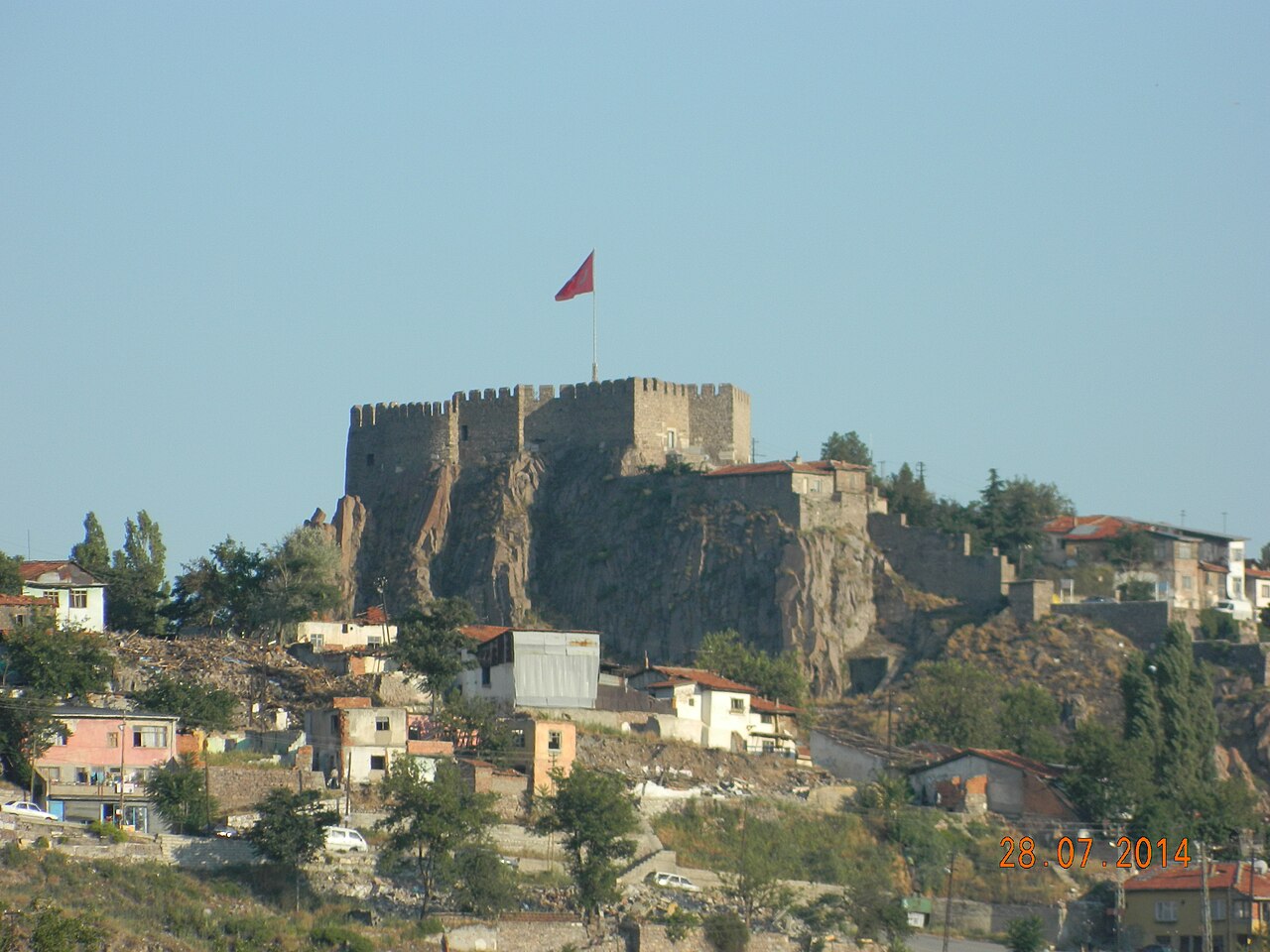
Ankara Castle is one of the city’s oldest and most symbolic structures. Its history dates back to the Roman, Byzantine, Seljuk, and Ottoman periods. The castle is located in the Altındağ district of Ankara, positioned on a high hill, serving both as a strategic defense point and an observation terrace overlooking the city center. The structure, consisting of outer walls and an inner fortress, reflects architectural influences from different eras. The narrow streets, stone houses, and traditional architectural texture around the castle carry traces of the past into the present.
Ankara Castle offers visitors not only a historical structure but also an impressive view of the city from above. Watching Ankara from the castle at sunset is an unforgettable experience for both local and foreign tourists. Along the road leading to the castle, there are art workshops, shops selling handcrafted products, and cafés offering local flavors. Additionally, cultural venues such as the Rahmi M. Koç Museum located near the castle further enrich the visit. Ankara Castle is an ideal stop for those seeking both a historical journey and a panoramic view of the city.
3. Hamamönü – A neighborhood famous for its restored historical houses and cafés.
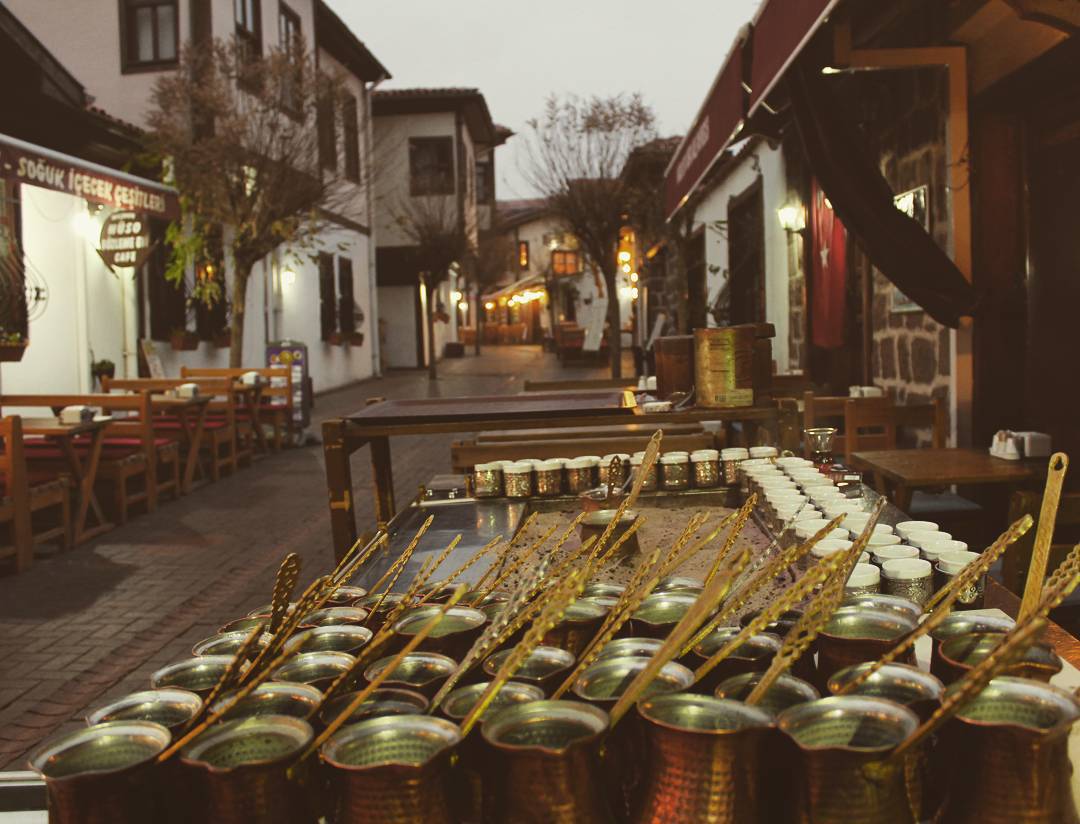
Hamamönü is a historic neighborhood located in the Altındağ district of Ankara, standing out with its Ottoman-era architecture. Revived through the restoration of traditional Ankara houses, this area offers visitors a sense of time travel with its narrow cobblestone streets, wooden bay-windowed houses, and authentic atmosphere. Once nearly forgotten, it has become a cultural attraction thanks to extensive restoration efforts. Today, Hamamönü is a popular destination for both locals and tourists.
The neighborhood is notable not only for its architecture but also for its cultural activities, handicraft workshops, and cafés offering local delicacies. Annual Ramadan events, street musicians, book fairs, and traditional handicraft markets help preserve Hamamönü’s cultural fabric. The house where Mehmet Akif Ersoy once lived is also located here and is open to visitors as a museum. Hamamönü is a special corner of Ankara that preserves its historical character while integrating with modern life, offering both a peaceful and culturally rich experience.
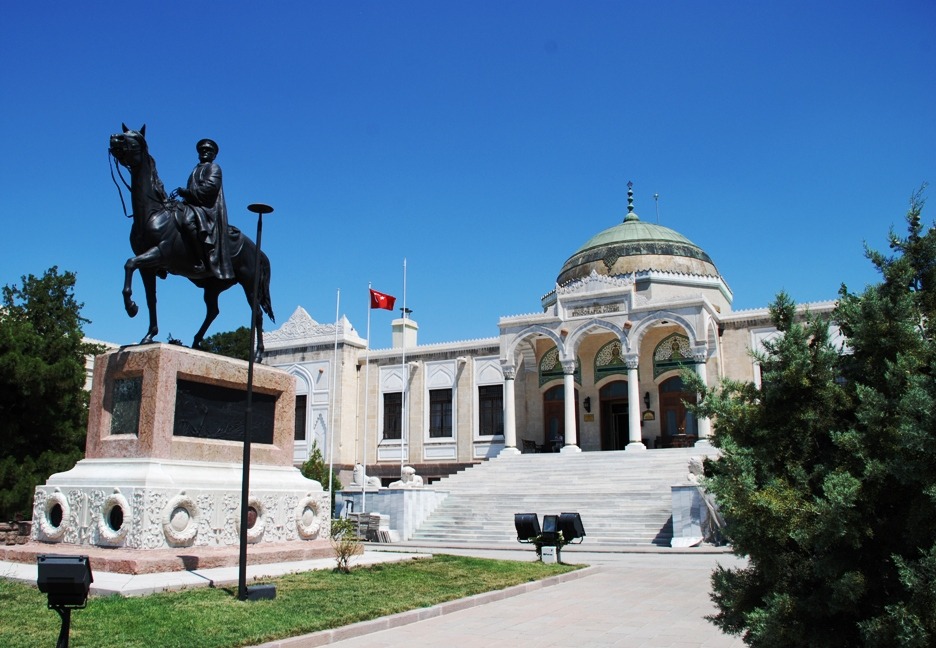
The Ethnography Museum is one of the significant museums reflecting the richness of Turkish culture, located in the Ulus district of Ankara. The decision to establish the museum was made in 1925, and it was opened to visitors in 1930 as the first museum inaugurated during the Republic of Turkey era. The museum building, designed by architect Arif Hikmet Koyunoğlu, is a simple yet impressive structure that reflects Turkish architectural elements. The marble statue of Atatürk in front of the museum was made in 1927 by Italian sculptor Pietro Canonica. Following Atatürk’s death, his body was kept in this museum for 15 years until Anıtkabir was completed.
The museum’s collection includes numerous artifacts representing Anatolian Turkish culture, such as carpets, kilims, traditional clothing, jewelry, weapons, and examples of wood and metal craftsmanship. Additionally, objects and displays related to traditional Turkish ceremonies such as circumcision, weddings, and military send-offs are also exhibited. The displayed items shed light on the historical past of Anatolia and reveal traditional lifestyles. The Ethnography Museum is a highly valuable resource for visitors wishing to learn more about Turkish folk culture.
5. Museum of Anatolian Civilizations – An award-winning archaeology museum recognized worldwide.

The Museum of Anatolian Civilizations is one of Turkey’s most important archaeology museums, located in the Ulus district of Ankara, on the southern slope of Ankara Castle. The museum was formed by restoring two historical Ottoman-era buildings: the Mahmut Paşa Bedesten and the Kurşunlu Han. These structures, built in the 15th century, remained unused for a long time after a fire in 1881. Upon the instruction of Mustafa Kemal Atatürk, the buildings were restored between 1938 and 1968 to display archaeological artifacts collected from Anatolia. The museum opened to visitors in 1943 and took its current form in 1968. In 1997, it was awarded the “Museum of the Year in Europe” by the European Museum Forum.
The museum’s collection spans a broad period, starting from prehistoric times and extending from the Paleolithic Age to the Ottoman period. Among the exhibited items are Mother Goddess statues from Çatalhöyük, gold and bronze objects from royal tombs in Alacahöyük, cuneiform tablets from the Assyrian trade colonies in Kültepe, and burial items belonging to the Phrygian King Midas in Gordion. Additionally, important artifacts such as the İnandık Vase from the Hittite period, ivory carvings from the Urartians, and marble statues from the Roman period are also on display. This rich collection presents visitors with the cultural heritage of Anatolia spanning thousands of years.
6. CerModern – An art center hosting modern art exhibitions.
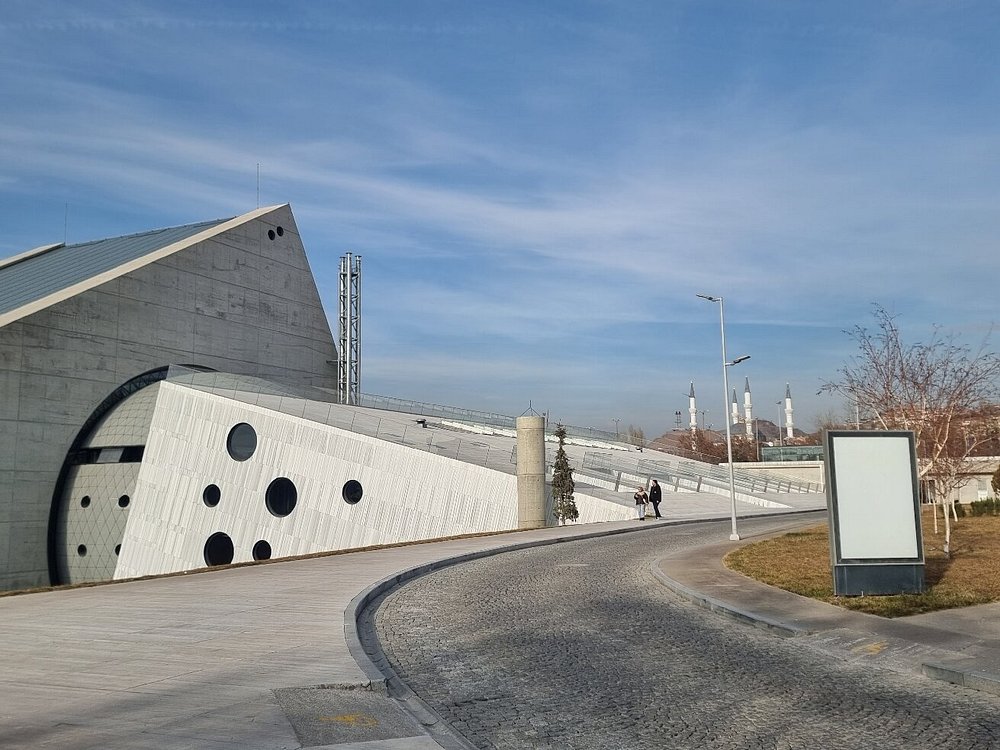
CerModern is one of Turkey’s leading modern art centers, located in the Sıhhiye neighborhood of the Altındağ district in Ankara. Originally built in 1926–1927 for the maintenance and repair of railway vehicles, the former Railway Workshop was restored in 2010 by architects Semra and Özcan Uygur and reopened as CerModern. This transformation aimed to preserve industrial heritage while integrating it with contemporary art.
CerModern offers visitors a comprehensive art experience with its exhibition halls, workshops, library, café, and restaurant spread across an area of 11,500 square meters. In addition to hosting exhibitions by national and international artists, the center contributes to Ankara’s cultural life with a variety of events such as theater performances, concerts, film screenings, and workshops.
Visiting hours are from Tuesday to Sunday, 10:00 AM to 7:00 PM. It is closed on Mondays.
7. Atatürk Forest Farm and Zoo – Nature and history intertwined.
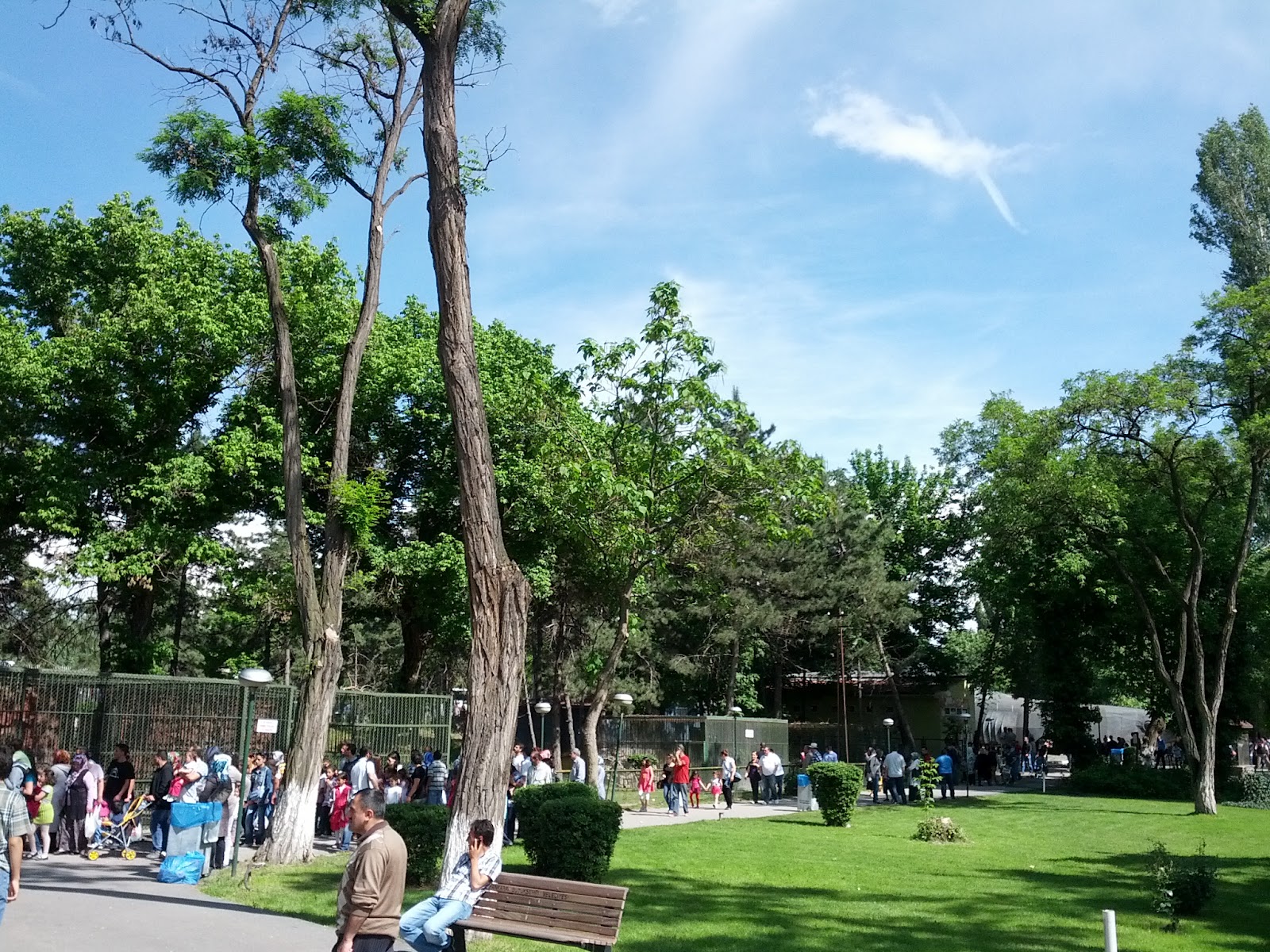
Atatürk Forest Farm (AOÇ) is a model farm established in Ankara on May 5, 1925, by Mustafa Kemal Atatürk, the founder of the Republic of Turkey, with the aim of modernizing agriculture and livestock. Initially known as the “Gazi Forest Farm,” the area was transformed from swamps and barren lands into fertile fields under Atatürk’s leadership and quickly became a major green space meeting Ankara’s needs. In 1937, Atatürk donated the farm and his other properties to the Turkish nation.
AOÇ stood out not only for its agricultural and livestock activities but also for its social and cultural offerings. The farm housed a brewery, a dairy facility, the Atatürk House Museum—a replica of Atatürk’s birthplace in Thessaloniki—and various recreational areas open to the public. Additionally, a miniature zoo was established in 1933 to display animals harmful to agriculture and the public; due to high interest, it was later developed into a modern zoo and opened on October 29, 1940.
However, the Atatürk Forest Farm Zoo was closed on August 26, 2013, for renovation. Following its closure, most of the animals were transferred to the Gaziantep Zoo. In 2016, a large theme park named Ankapark was opened in its place.
Today, Atatürk Forest Farm remains one of Ankara’s key green areas. It still features attractions such as the Atatürk House Museum, Central Restaurant, various production facilities, and retail outlets. Additionally, the Digital Zoo project launched by Ankara Metropolitan Municipality offers visitors the opportunity to learn about animals through virtual reality technology.
With its historical significance and natural and cultural richness, Atatürk Forest Farm is an ideal destination in Ankara for those seeking an experience where nature and history come together.
8. Kuğulu Park – A city park in Çankaya, famous for its swans.
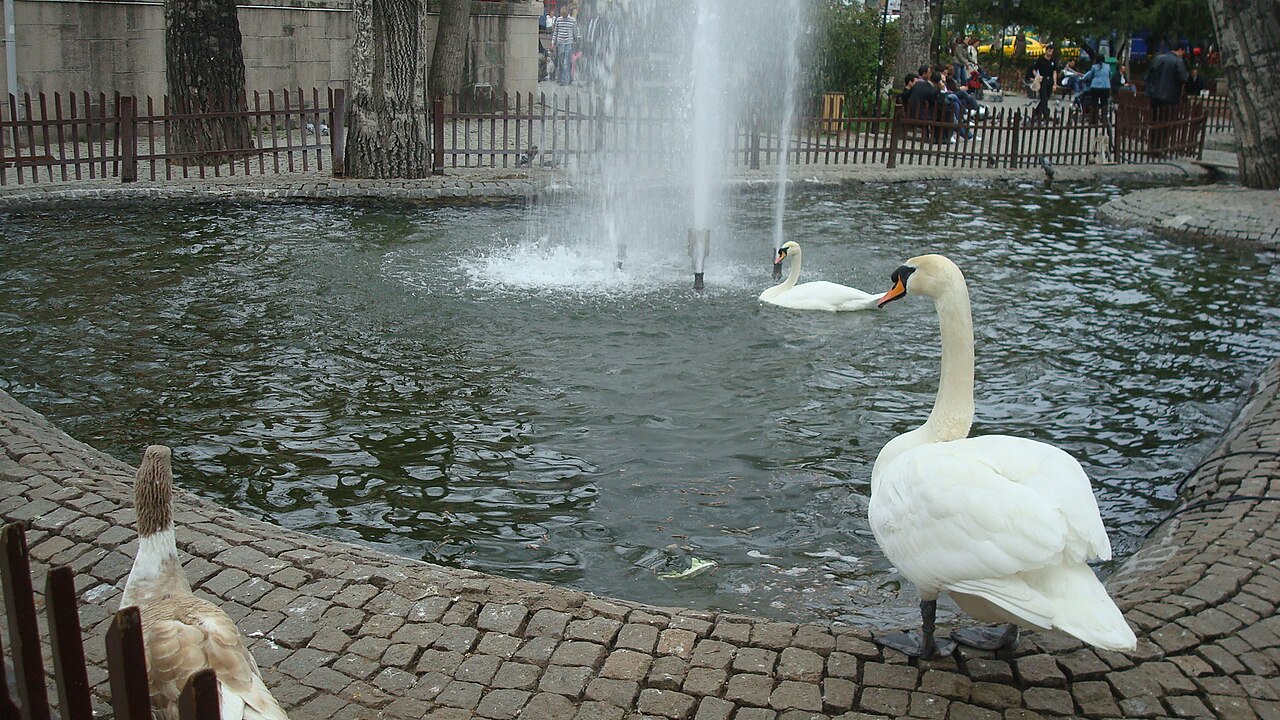
Kuğulu Park is one of the most beloved and iconic parks in the capital, located in the Kavaklıdere neighborhood of Ankara’s Çankaya district, at the intersection of Tunalı Hilmi Street, Atatürk Boulevard, and Poland Street. Established in 1958 by the Ankara Municipality, the park gets its name from the swans it hosts. In addition to swans, the park’s pond is also home to geese and ducks. The white swans gifted by the Municipality of Vienna and the black swans presented by the Chinese government are among the park’s most notable residents. A total of 24 different bird species can be observed in the park.
Kuğulu Park stands out not only for its natural beauty but also for its cultural and historical significance. At the entrance of the park stands a statue of Tunalı Hilmi Bey, created by Ümit Öztürk and erected in 2006. Inside the park is another sculpture, titled “The Kissers,” made by Muzaffer Ertoran. The park features children’s playgrounds, walking paths, and a cafeteria overlooking Atatürk Boulevard. Among its rich vegetation are poplar, sycamore, lilac, redbud, and hawthorn trees, as well as various shrubs and seasonal flowers. Due to its historical and natural value, Kuğulu Park has been declared a protected area by the Ankara Cultural and Natural Heritage Preservation Board of the Ministry of Culture.
9. Gençlik Park – Recreation areas, amusement park, and walking paths.
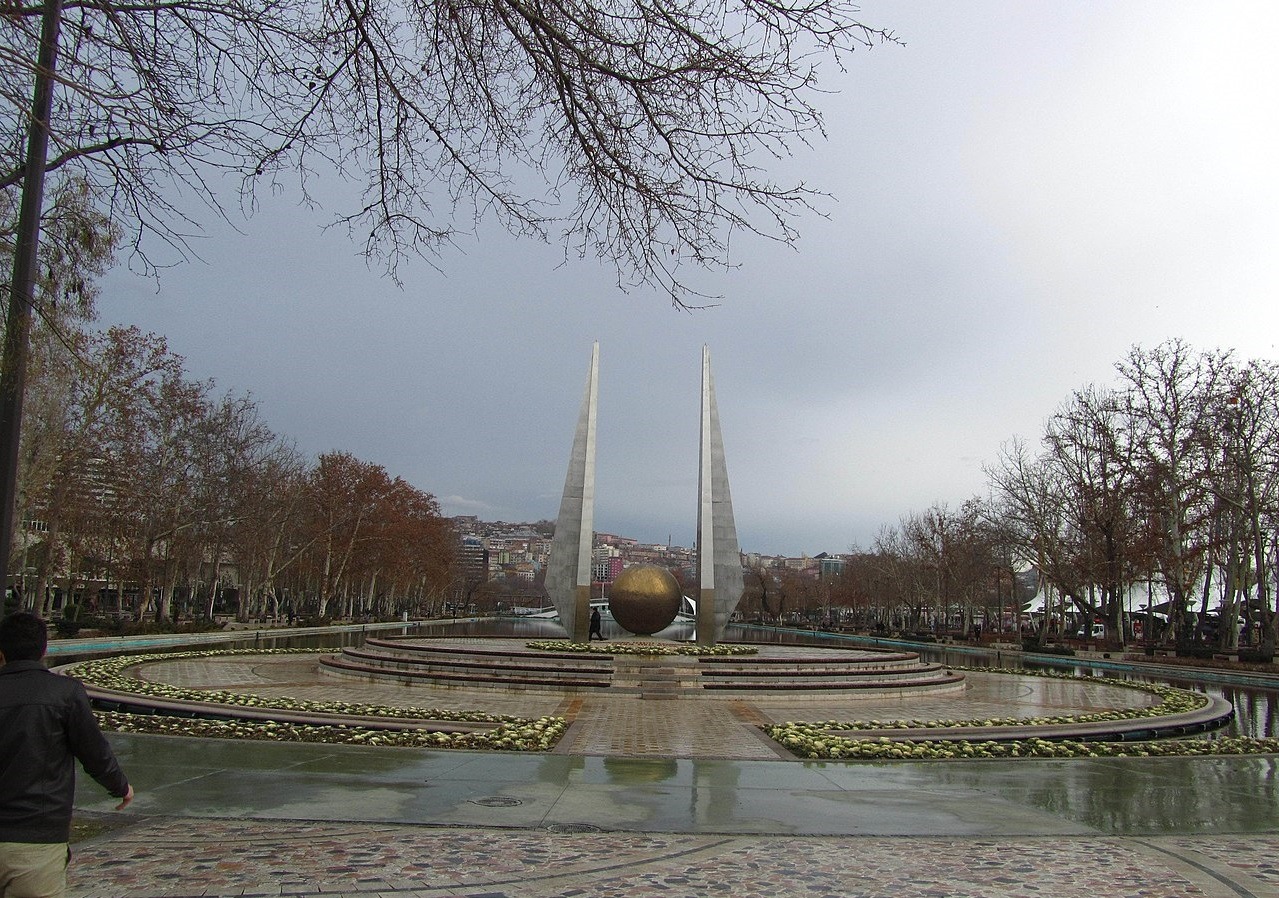
Located in the Ulus neighborhood of Ankara’s Altındağ district, Gençlik Park is one of the capital’s oldest and most iconic parks, spread over a vast area of 275,000 square meters. Built on what was once a swamp during the early years of the Republic, the park was opened to the public on May 19, 1943. Inside the park, there are various social and cultural facilities, including an artificial pond, walking and jogging paths, children’s playgrounds, picnic areas, an open-air theater, cafés, and restaurants. Paddle boat and rowboat rides are also available on the artificial pond located at the center of the park.
One of the park’s most notable features is its amusement park, established in 1951. In addition to classic rides such as a Ferris wheel, bumper cars, and a carousel, there are also modern amusement attractions. The park underwent extensive renovations in 2008–2009, during which a 44,000-square-meter pool area and a 70,000-square-meter lawn were added. Other facilities within the park include a 1,029-square-meter children’s play area, a 25,000-square-meter amusement park, and a 10,000-square-meter opera building.
Gençlik Park is an ideal place for those who want to enjoy nature in the center of Ankara. Easily accessible by public transportation, the park remains one of the city’s most important recreational areas, offering various activities for visitors of all ages.
10. Kocatepe Mosque – One of the largest mosques in Ankara.
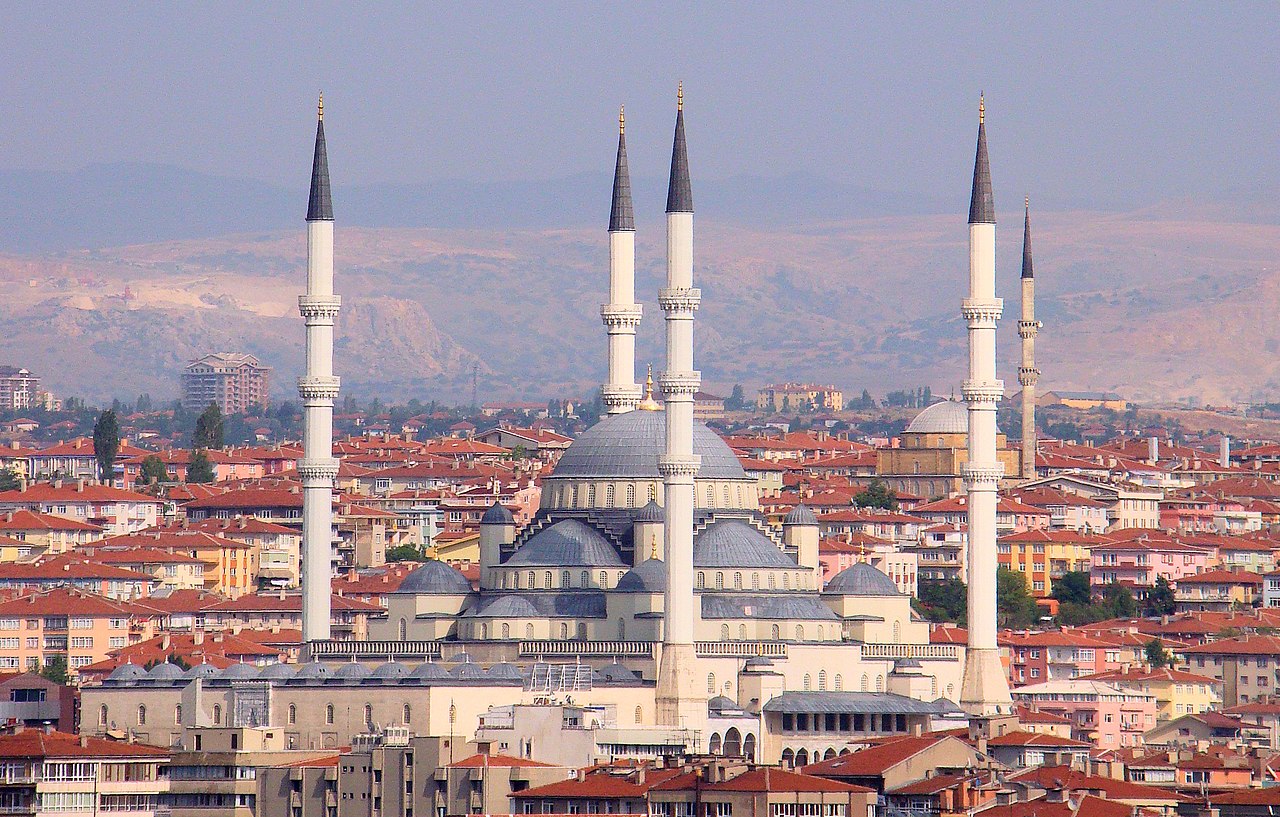
Kocatepe Mosque is a magnificent place of worship and cultural center located in the Çankaya district of Ankara and is the largest mosque in the capital. Construction began in 1967 and was completed in 1987, opening for worship that same year. Various architectural proposals were considered during its construction, but ultimately, the design by Hüsrev Tayla and Fatin Uluengin, reflecting traditional Ottoman architecture, was implemented. This design, inspired by the Selimiye and Sultan Ahmed mosques, is regarded as a modern interpretation of classical Ottoman architecture.
The mosque is built on an area of 4,500 square meters and features four minarets, each 88 meters high. The main dome is 48.5 meters in height and 25.5 meters in diameter. The interior space consists of a central dome supported by four large piers, surrounded by four semi-domes. The interior decoration includes tiles, marble, gold leaf, and special paints, with calligraphy done by master calligraphers Hamit Aytaç and Mahmut Öncü. The lower level of the mosque houses social facilities such as a conference hall, library, parking area, and commercial spaces.
Kocatepe Mosque, beyond being a place of worship, has become one of the symbols of the capital with its architecture dominating Ankara’s skyline and visible from many parts of the city. With its spacious courtyard, impressive interior, and architectural details, it offers visitors both a spiritual and aesthetic experience. This structure, of great historical and cultural importance, is a must-see for anyone visiting Ankara.
11. Hacı Bayram Veli Mosque and Tomb – A site of historical and religious significance.
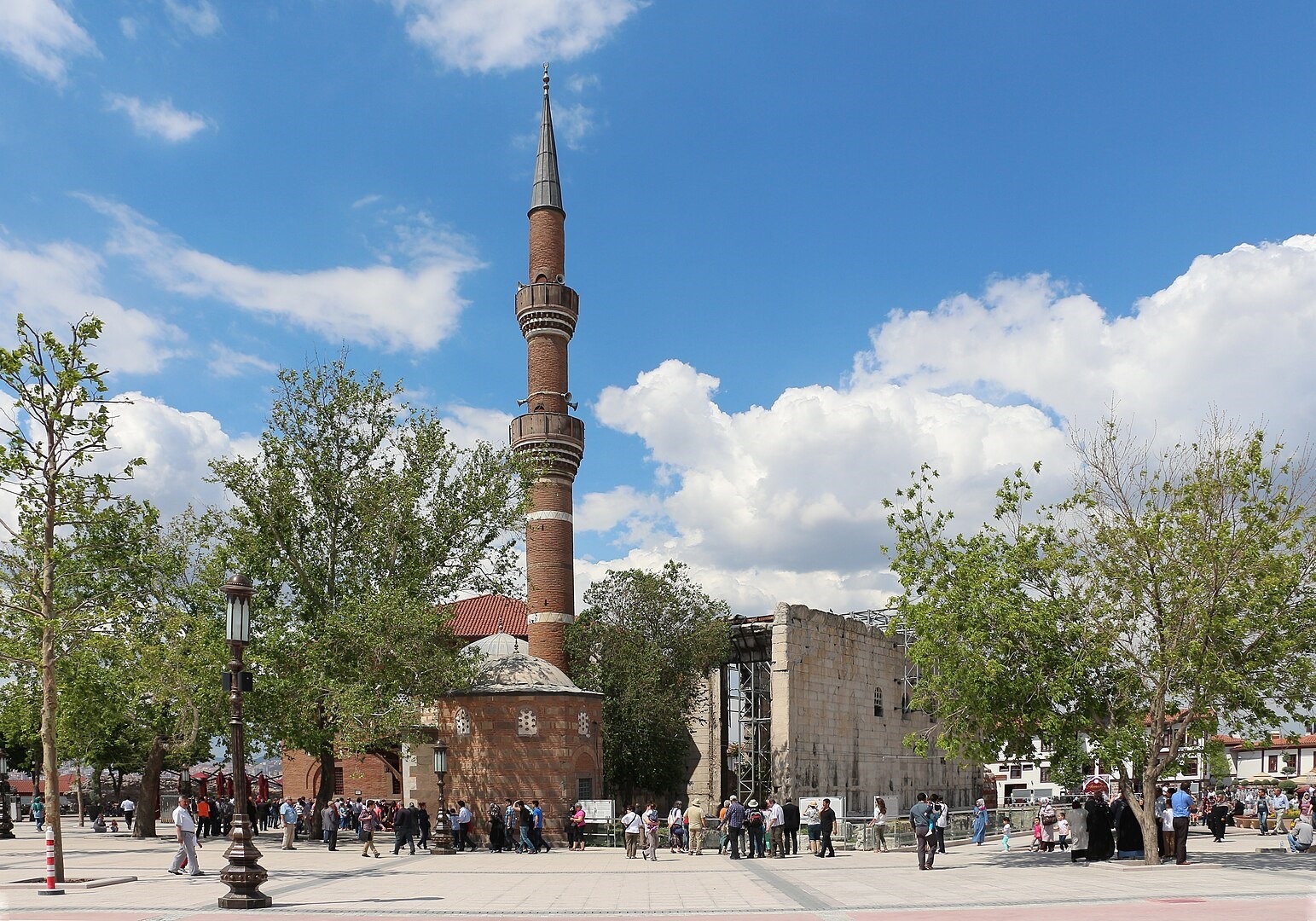
Hacı Bayram Veli Mosque and Tomb is one of the most important religious and historical structures in Ankara, located in the Ulus neighborhood of the Altındağ district. The mosque was built in 1427–1428 during the Ottoman period and is named after the Turkish Sufi and poet Hacı Bayram Veli. Right next to the mosque is the tomb of Hacı Bayram Veli, constructed in 1429. This complex is a significant destination in Ankara both for faith tourism and for its architectural and historical value.
The mosque’s architecture reflects the characteristics of classical Ottoman mosque design. It has a square plan, a single minaret, and a lead-covered dome. The interior features prominent woodwork and decorative hand-painted ornamentation. The adjacent tomb, with its octagonal drum and lead-covered dome, stands out architecturally. In addition to Hacı Bayram Veli, other prominent figures of the Bayramiyya Sufi order are also buried here. Furthermore, the ruins of the Temple of Augustus from the Roman period are located right next to the mosque complex, demonstrating that the area has hosted various civilizations throughout history.
Hacı Bayram Veli Mosque and Tomb were included in the UNESCO World Heritage Tentative List in 2016. With its religious significance as well as its historical and cultural value, this site is one of the most visited places in Ankara.
12. Roman Baths Ruins – Ancient Roman remains located in Ulus.
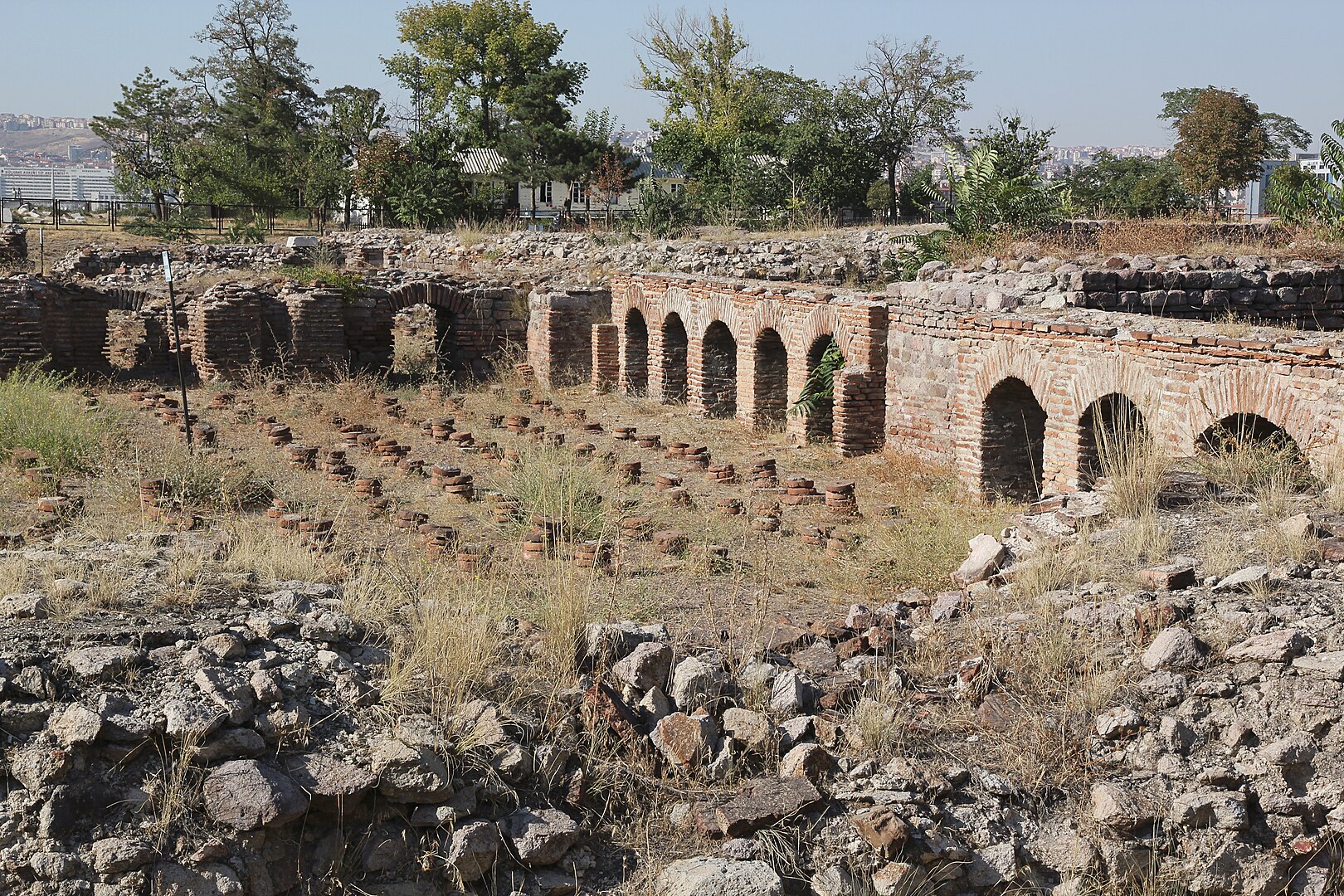
The Roman Baths, located on Çankırı Street in the Ulus neighborhood of Ankara’s Altındağ district, are among the capital’s most significant ancient ruins. Built between AD 212–217 by Roman Emperor Caracalla in honor of the God of Health, Asclepius, this structure is a rare example reflecting the grandeur of Roman architecture. Covering an area of approximately 65,000 square meters, the bath complex was uncovered through excavations conducted between 1937 and 1943 and was transformed into an open-air museum during the restoration works between 1997 and 2001.
The Roman Baths include all the key elements of classical Roman bath architecture, such as the palaestra (exercise area), frigidarium (cold room), tepidarium (warm room), and caldarium (hot room). Additionally, around 1,000 artifacts, including columned walkways, tomb steles, inscriptions, and architectural fragments, are exhibited at the site. These artifacts date back to the Roman and Byzantine periods and offer valuable insights into the social, cultural, and economic structures of the time.
The Roman Baths are open to visitors every day of the week from 08:30 AM to 7:00 PM. For entrance fees and further details, you can visit the official website. Access by public transportation is quite easy; it is about a 5–10 minute walk from Ulus Square. For those interested in history, the Roman Baths of Ankara are a must-see archaeological site.
13. Temple of Augustus – A significant structure from the ancient period.
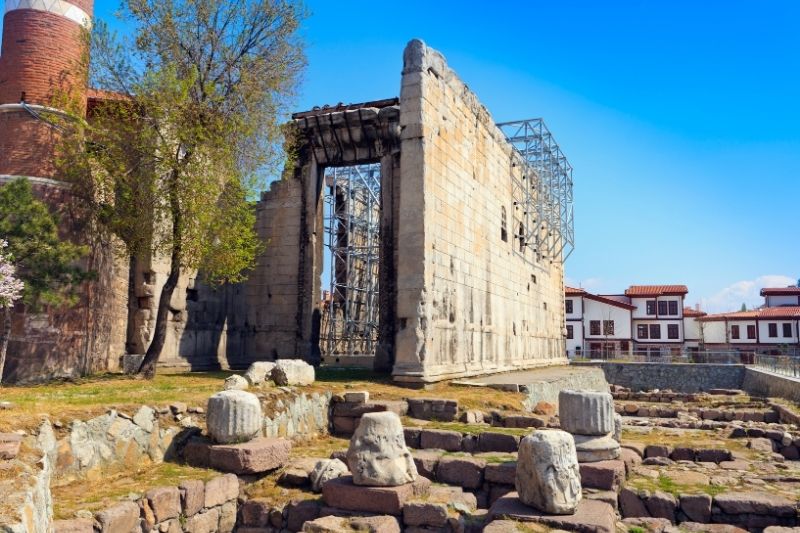
Located in the Altındağ district of Ankara, right next to the Hacı Bayram Mosque, the Temple of Augustus is one of the most important structures from the Roman period. It was built between 25–20 BC in honor of Roman Emperor Augustus and dedicated to the local goddess of the city, Roma. The temple is designed in the Corinthian order with a pseudo-dipteral plan, measuring approximately 36 by 55 meters. It is elevated on a podium accessed by eight steps, about two meters high, and is surrounded by 8 columns on the short sides and 15 columns on the long sides.
The temple’s most striking feature is the inscription of the Latin and Greek texts of “Res Gestae Divi Augusti,” the testament of Emperor Augustus that recounts his achievements, carved onto the temple’s walls after his death. These inscriptions are among the most comprehensive and best-preserved official documents of the Roman Empire. The Latin text is located on the pronaos (front chamber) wall, while the Greek translation is inscribed on the outer wall of the cella (sanctuary).
Over time, the temple was converted into a church during the Byzantine period; an apse was added, and windows were opened in some of the walls. In the 15th century, with the construction of the Hacı Bayram Mosque, the temple was repurposed as a madrasa.
Today, the Temple of Augustus is open to visitors as a significant part of Ankara’s historical and cultural heritage. It can be visited free of charge between 09:00–19:00 in summer and 08:00–17:00 in winter.
This ancient structure, one of the few surviving from the Roman period, is a unique destination for those interested in history and archaeology.
14. Ulus Square – An area surrounded by buildings from the early years of the Republic.
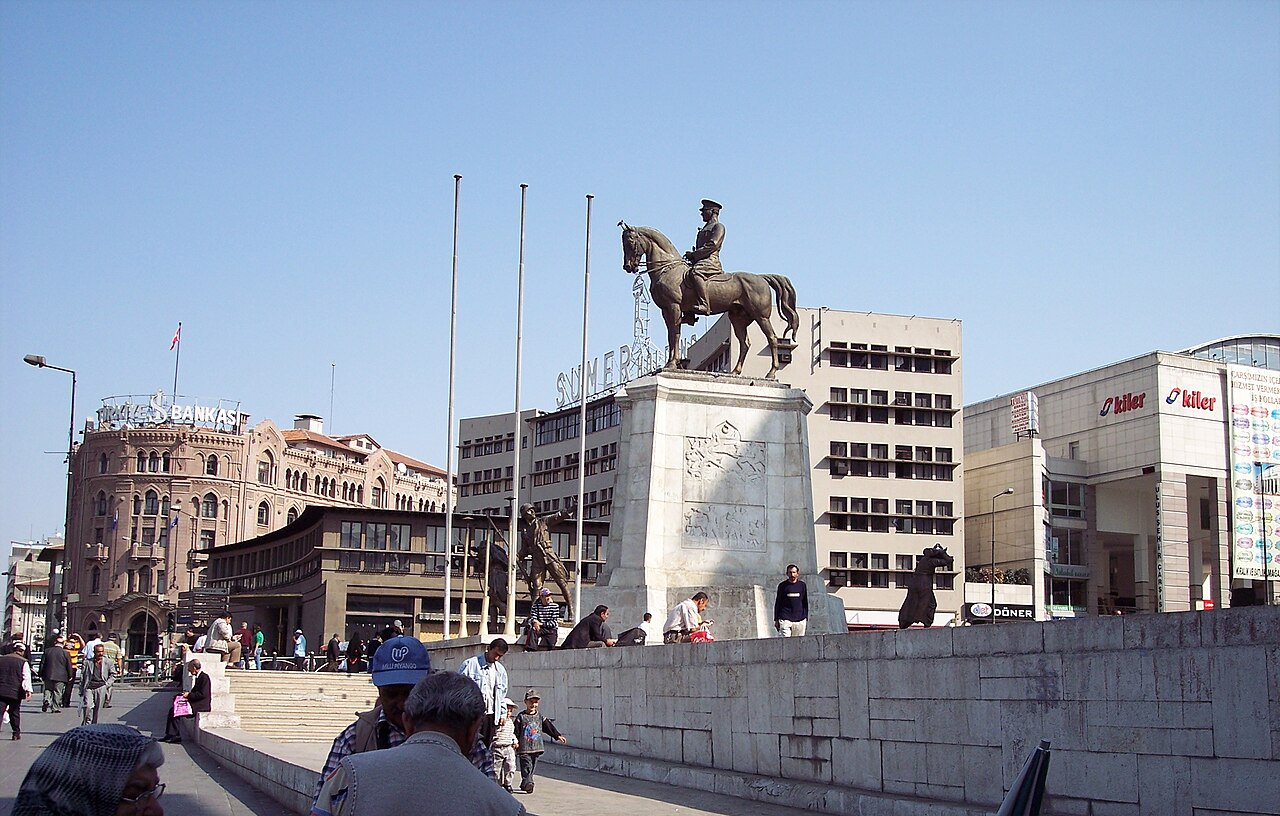
Ulus Square is a significant historical center located in the Altındağ district of Ankara, which witnessed the founding period of the Republic of Turkey. Considered the heart of Ankara during the early years of the Republic, the square hosts many important buildings. At its center stands the Victory Monument, created in 1927 by Austrian sculptor Heinrich Krippel, symbolizing the War of Independence. This striking monument features a depiction of Mustafa Kemal Atatürk on horseback, surrounded by reliefs illustrating various aspects of the war.
The surroundings of Ulus Square are filled with buildings reflecting the architectural style of the early Republican era. Among them are the building that served as the Grand National Assembly of Turkey between 1920 and 1924, now functioning as the War of Independence Museum, and the structure used as the parliament building from 1924 to 1960, currently operating as the Republic Museum. Additionally, the former headquarters of Türkiye İş Bankası and Sümerbank are also located in this area, serving as important examples of the period’s economic and political framework.
Ulus Square stands out not only for its historical buildings but also as a hub for social and cultural activities. In the past, it was the main venue for national holidays and official state ceremonies. Today, it remains a key stop for visitors wanting to experience Ankara’s historical atmosphere.
15. TCDD Railway Museum – A nostalgic experience for those interested in railway history.
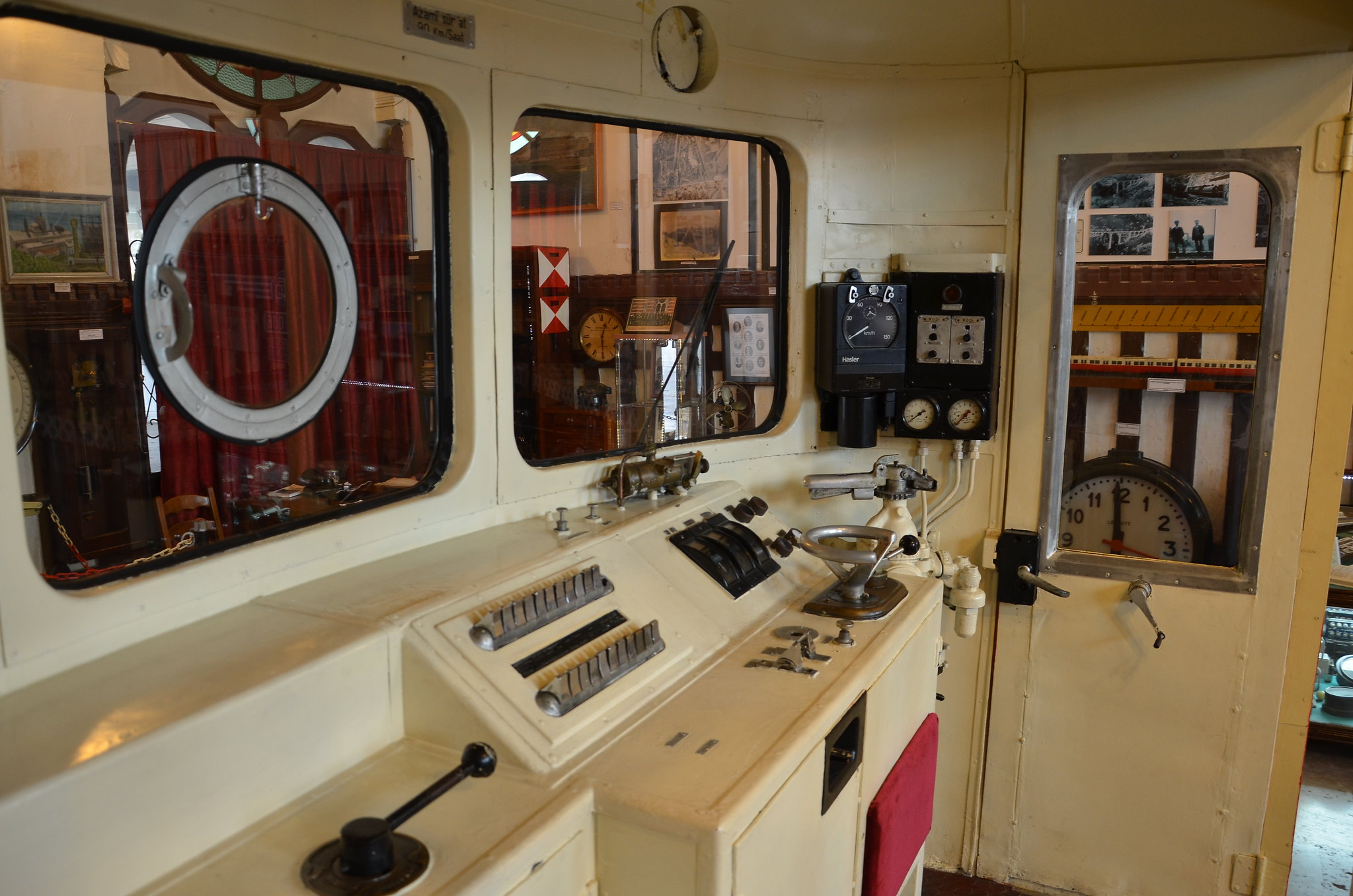
Located within the Ankara Train Station complex in the Altındağ district, the TCDD Railway Museum offers a nostalgic experience for those interested in the history of railways. The museum operates in a building known as the “Directorate Building,” which was constructed in 1892 during the construction of the Baghdad Railway. This building was used by Mustafa Kemal Atatürk as his headquarters and residence when he arrived in Ankara on December 27, 1919. It served as a decision-making center between 1920 and 1922 and was opened as a museum on December 24, 1964.
The ground floor of the museum houses a rich collection related to railway history. On display are railway items used from 1856 to the present day, documents from dining and sleeping cars, medals, railroad switches, rails, and silver tableware. Also featured are seals, certificates, ID cards, tickets, locomotive plates, telephones, and telegraph devices used in railway communication.
Upstairs are Atatürk’s reception room, study and bedroom, as well as the room of Fikriye Hanım. These rooms have been preserved in their original state with period furniture and personal belongings. Additionally, Atatürk’s private railcar, used during his domestic trips between 1935 and 1938, is exhibited next to the museum building.
The museum is open on weekdays from 09:00 to 17:00 and admission is free. It is closed on weekends and on national and religious holidays.
16. Atçalı Museum Village – An open-air museum reflecting traditional Anatolian village life.

Located in the Altındağ district of Ankara, the Altınköy Open-Air Museum is a unique venue for those who wish to experience traditional Anatolian village life. Established by the Altındağ Municipality in 2012, the museum spans approximately 500 acres and presents a village atmosphere reflecting the architecture and culture of the 1930s–1950s. Designed entirely to replicate village life, the museum features a village coffeehouse, a village headman’s office, barns, gardens, and traditional Turkish-style village houses.
The Altınköy Open-Air Museum includes areas such as traditional village homes, agricultural and livestock sections, handicraft workshops, a mill and bakery, a mosque and school, a village square, and traditional play areas. Visitors can tour houses inspired by different regions of Anatolia, engage in traditional crafts, and observe various aspects of rural life.
The museum is open daily from 10:00 AM to 6:00 PM, except on Mondays. For admission fees and further details, you can visit the museum’s official website.
17. Lake Mogan and Park (Gölbaşı) – Lakeside walking and picnic areas.
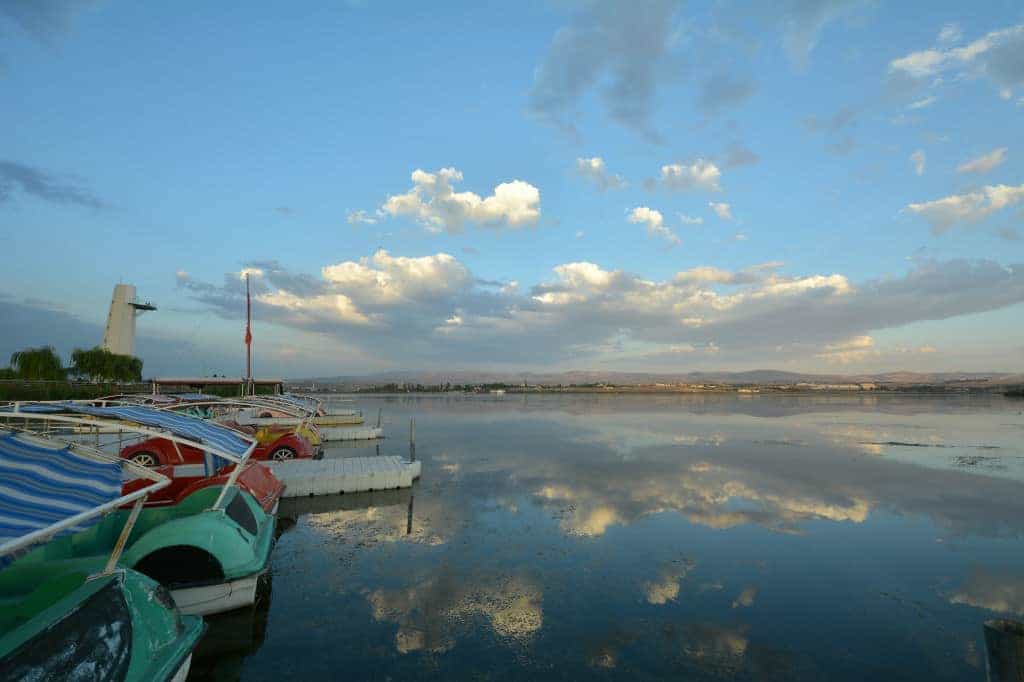
Lake Mogan and the surrounding Mogan Park are located in the Gölbaşı district of Ankara and serve as an ideal recreational area for those wishing to spend time in nature. Situated about 20 kilometers from the city center, the area offers a peaceful environment with walking paths, picnic spots, and various social facilities. Spanning 644,979 square meters, Mogan Park includes wooden shoreline walkways, jogging and walking tracks, children’s playgrounds, tennis courts, and basketball courts.
Lake Mogan, located within the Gölbaşı Special Environmental Protection Area, stands out for its rich flora and fauna. The picnic areas around the lake offer facilities for barbecuing, while the lakeside walking paths provide a pleasant experience for nature lovers. There are also various cafés and restaurants along the lake. For those using public transportation, bus lines 106-4, 158, and 158-3 pass near the Lake Mogan Recreation Area.
Lake Mogan and Park are indispensable destinations in Ankara for anyone looking to connect with nature, go for a walk, or enjoy a picnic.
18. Seğmenler Park – A large green area in the city center.
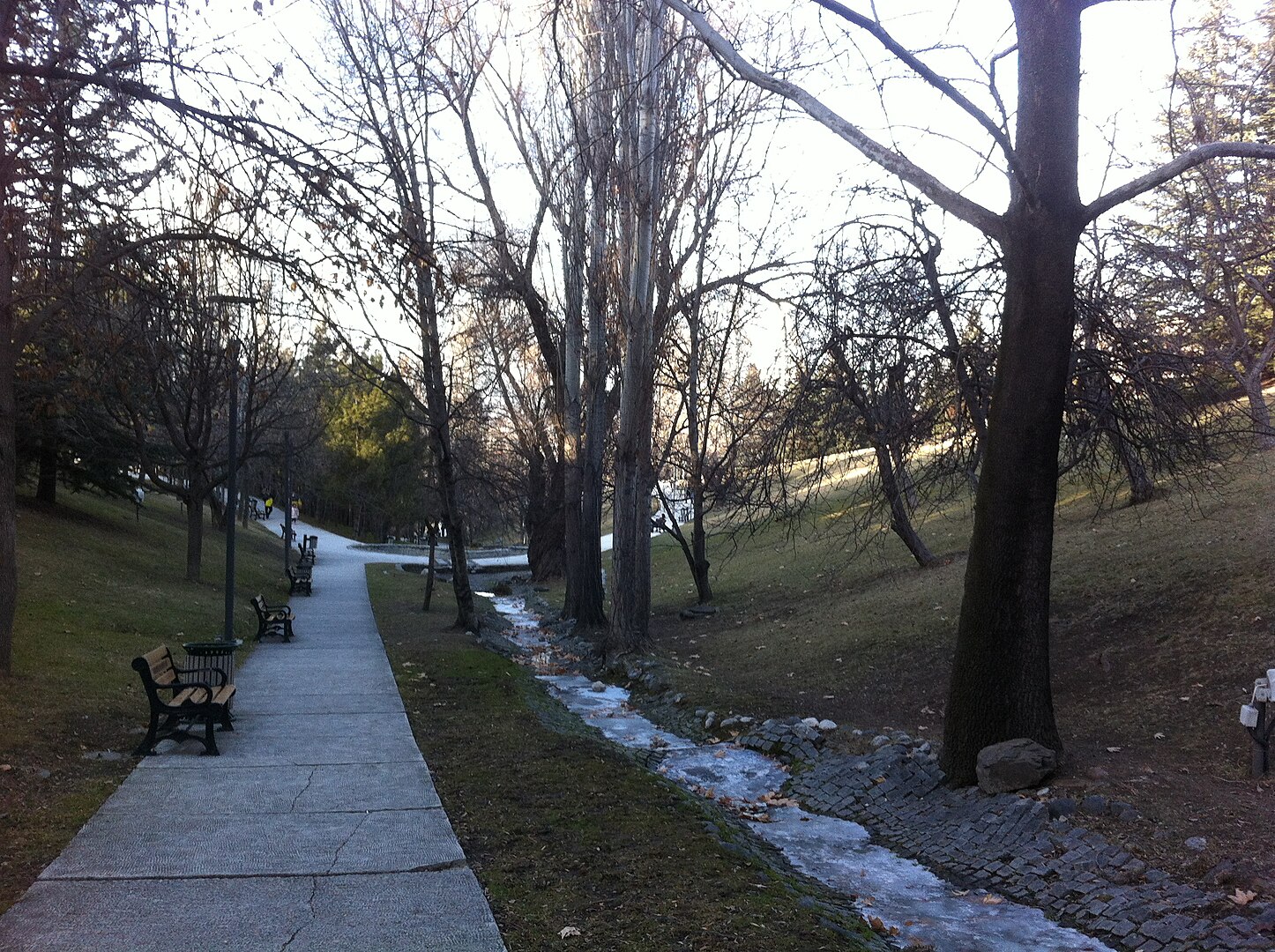
Located in the Çankaya district of Ankara, Seğmenler Park is an ideal green space for those who wish to spend time in nature in the heart of the city. Covering an area of approximately 67,000 square meters, the park was opened in 1983 by the Ankara Metropolitan Municipality. It is named after the “seğmen,” who hold an important place in Ankara’s traditional folk dances. With its lawns, walking paths, children’s playgrounds, outdoor fitness equipment, and artificial ponds, the park offers visitors a peaceful environment.
Seğmenler Park provides various opportunities for picnicking, walking, exercising, or simply enjoying nature. Especially in spring and summer, the park is adorned with colorful flowers, while in autumn it offers unique scenery with its yellowing leaves, making it a favorite among photography enthusiasts. From time to time, the park also hosts cultural events such as open-air concerts, exhibitions, and festivals. Thanks to its central location, it is easily accessible by public transport and is one of Ankara’s most cherished green spaces, frequented by both locals and visitors.
19. Botanical Park – Ideal for those who want to spend time in nature.
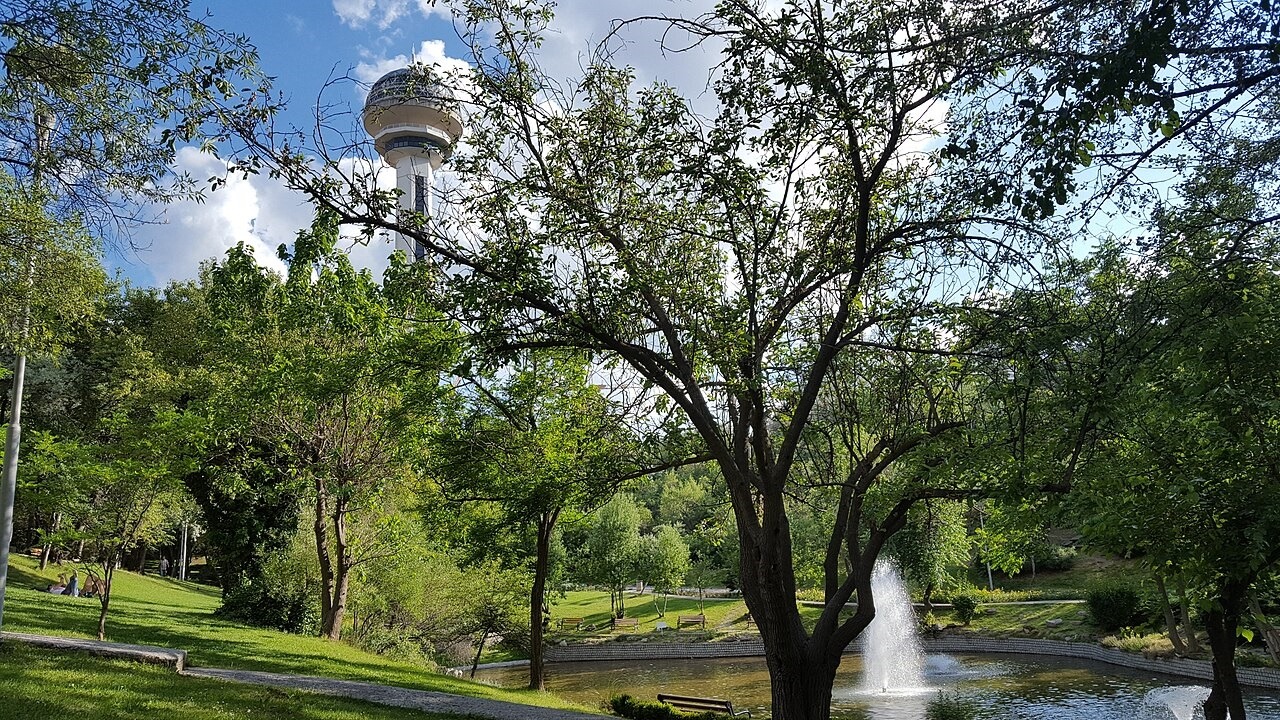
Located in the Çankaya district of Ankara, Botanical Park is an ideal green space for those who want to spend time in nature in the city center. Established in 1970, the park covers an area of approximately 65,000 square meters, with 46,200 square meters of green space, 15,532 square meters of paved surfaces, and 1,330 square meters of ponds.
Within the park are several themed sections: the Flora of Turkey Area, showcasing plant species native to different regions of the country; the Arboretum (Tree Museum), exhibiting various tree and shrub species; the Rock Garden, featuring plants from mountainous and rocky areas; the Rose Garden with hundreds of rose varieties; the Japanese Garden demonstrating traditional Japanese landscape art; the Succulent Garden displaying plants native to arid regions; and areas with medicinal and aromatic plants, as well as seasonal flower displays. Additionally, the park houses the “World Peace Bell” monument, established in 1989 to commemorate the victims of the atomic bombings of Hiroshima and Nagasaki.
Botanical Park offers visitors a peaceful environment with walking paths, seating areas, and natural beauty. Located near Atakule, it is accessible from Kızılay via bus lines 135, 188, 407, and 413. It is a hidden gem in the heart of Ankara for nature lovers, plant enthusiasts, and photography aficionados.
20. Altınköy Open-Air Museum – Village life and traditional Turkish architecture.
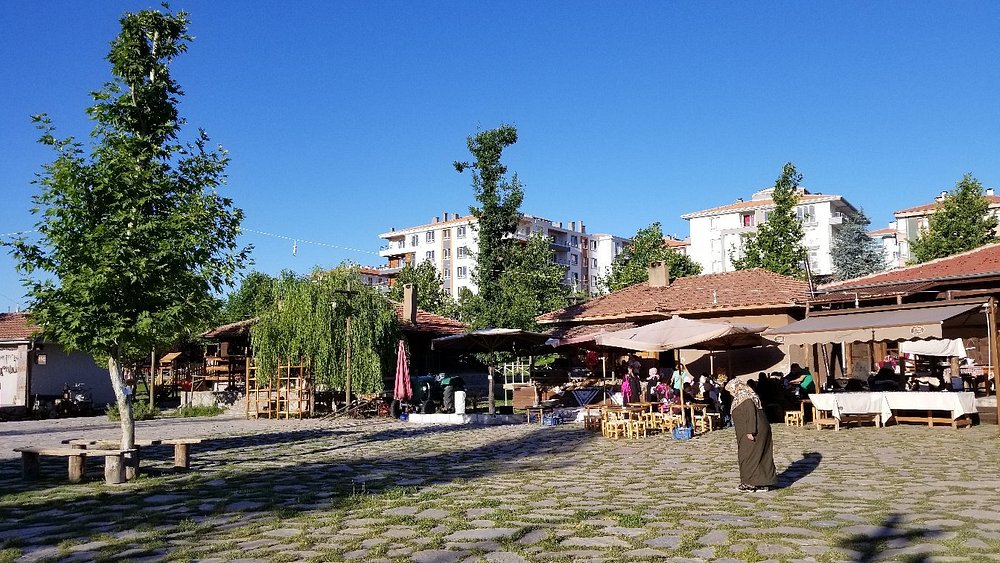
Altınköy Open-Air Museum is a cultural heritage site located in the Altındağ district of Ankara, aiming to preserve and revive traditional Anatolian village life. Initiated in 2012 by the Altındağ Municipality, the project carries the mission of safeguarding village culture, which is gradually being forgotten in the rapidly modernizing world, and passing it on to future generations.
Established on approximately 500 acres of land, the museum offers visitors the opportunity to experience the village atmosphere of the 1930s to 1950s firsthand. The museum area includes structures such as village houses reflecting traditional Turkish architecture, a village coffeehouse, a headman’s office, barns, gardens, a mosque, a school, a grocery store, a mill, and a bakery. These buildings are inspired by various regions of Anatolia and are arranged to reflect the lifestyle of that era.
Altınköy also features workshops showcasing traditional handicrafts, areas demonstrating agricultural and livestock activities, traditional play areas for children, and a biological pond. Visitors can view old-fashioned farming tools, observe seasonal planting and harvesting activities, and interact with farm animals.
The museum also hosts cultural events, concerts, and dance performances at certain times of the year. Altınköy Open-Air Museum offers both residents of Ankara and visitors from other cities an educational and enjoyable experience, providing a chance to experience traditional village life within the context of modern urban living.
Visiting hours and entrance fees may vary by season; for up-to-date information, it is recommended to visit the official website of the Altındağ Municipality.
21. TOBB University of Economics and Technology Art Gallery – Modern exhibitions.

TOBB University of Economics and Technology (TOBB ETÜ) is located in the Söğütözü neighborhood of Ankara and hosts various exhibitions in the fields of art and design. The Department of Visual Communication Design, part of the university’s Faculty of Fine Arts, Design, and Architecture, aims to present the works of students and academics to art enthusiasts.
Exhibitions at TOBB ETÜ are generally held on the university campus and are open to the public. For exhibition dates and details, you can visit the university’s official website.
These events in art and design contribute to the enrichment of Ankara’s cultural life and offer different perspectives to art lovers.
22. Atakule – One of Ankara’s landmarks, famous for its revolving restaurant.
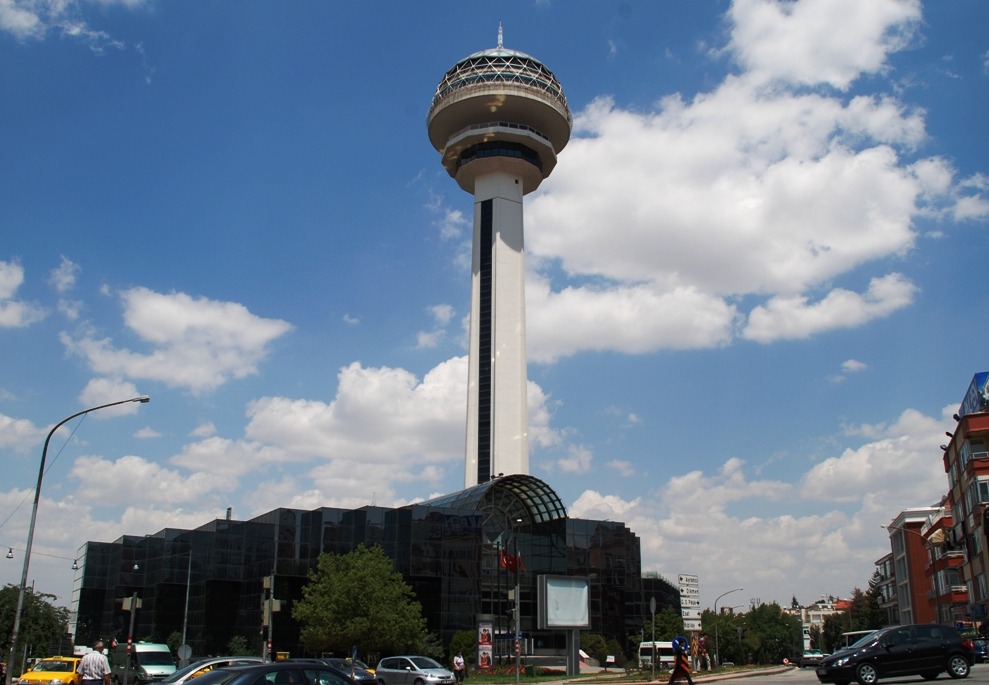
Atakule, located in the Çankaya district of Ankara, is one of the city’s iconic structures and was opened to the public in 1989. Standing at 125 meters tall, the tower is also known for hosting Turkey’s first revolving restaurant. The rotating platform at the top of the tower offers visitors a 360° panoramic view of Ankara. Atakule is not only notable for its architecture but also serves as a major attraction with the shopping center and social spaces located at its base.
The revolving restaurant at Atakule operates under the name “Nakia.” It offers distinguished examples of modern Turkish cuisine and provides guests with a unique dining experience thanks to its 360° rotating platform. The restaurant is open from Tuesday to Sunday, between 17:00 and 01:00.
Atakule is easily accessible. It is located on Çankaya Street, right next to Botanical Park. Visitors can reach it conveniently by public transportation or private vehicle. For more details about events, stores, and services, you can visit the official website at atakule.com.tr.
23. Beypazarı District – Ideal for day trips with its historic houses and local delicacies.
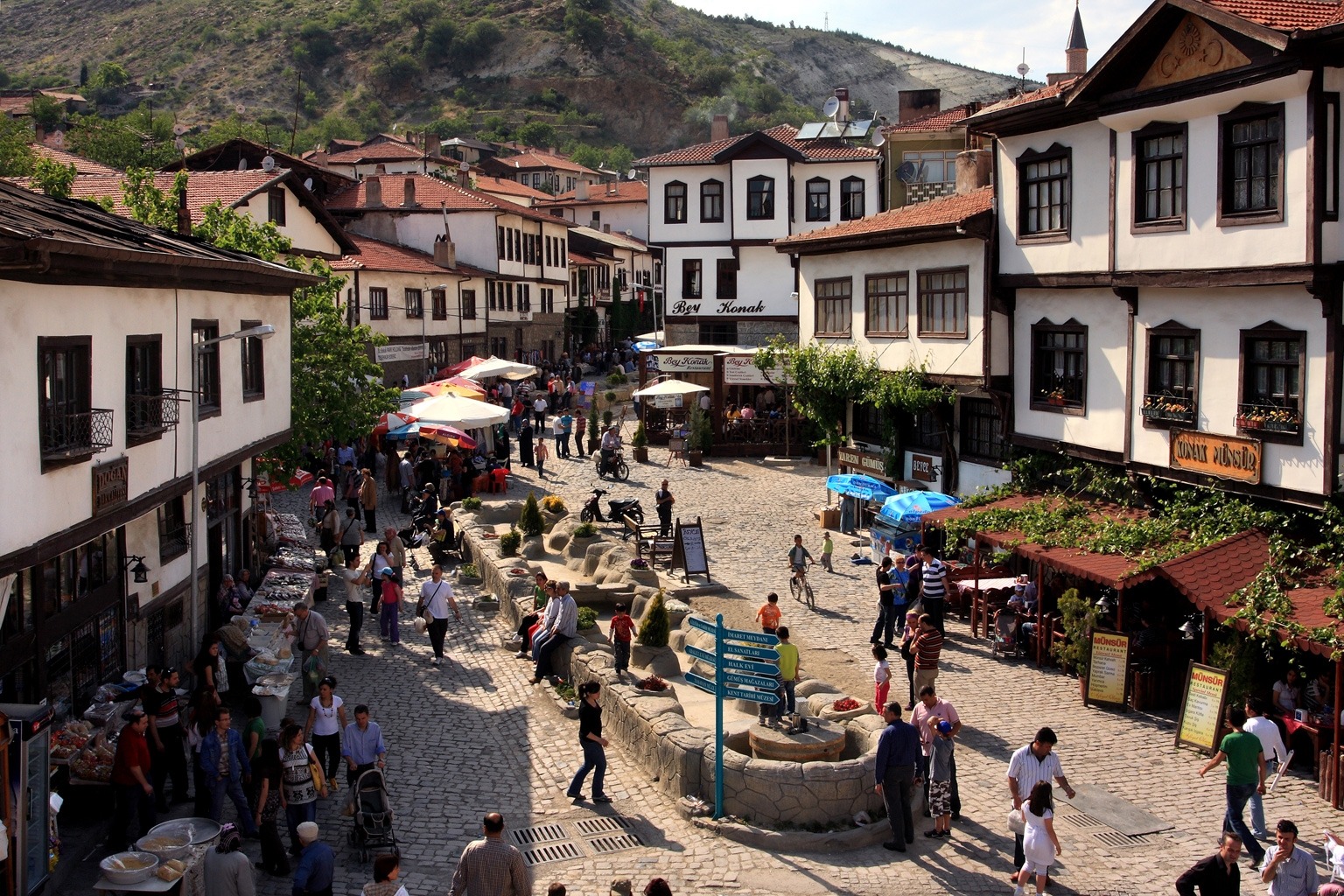
Beypazarı is a charming district located about 100 kilometers northwest of Ankara, known for its historical texture, traditional architecture, handicrafts, and delicious cuisine. Famous for its whitewashed, bay-windowed mansions from the Ottoman period, Beypazarı is home to over 3,000 registered historical houses, many of which have been restored and now serve as hotels, restaurants, or museums.
The district’s history dates back to around 3000 BC and has hosted many civilizations, including the Hittites, Phrygians, Galatians, Romans, Byzantines, Anatolian Seljuks, and Ottomans. Beypazarı’s former name was “Lagania,” and over time it became known as “Beğ Pazarı.”
While strolling through the streets of Beypazarı, you can visit the handicraft workshops, silver shops bazaar, and historical marketplace in areas such as Alaaddin Street and İmaret Square. You can also enjoy a panoramic view of the town from Hıdırlık Hill and go for nature walks in İnözü Valley.
Beypazarı is rich in local flavors. You can try dishes like Beypazarı stew, stuffed vine leaves, tarhana soup, 80-layer baklava, höşmerim dessert, walnut sausage, and Beypazarı kurusu (dry pastry). Additionally, Beypazarı supplies about 60% of Turkey’s carrot production, making carrot juice, carrot delight, and carrot jam especially popular.
Located just 1 to 1.5 hours away from Ankara, Beypazarı is an ideal destination for day trips. With its historical atmosphere, natural beauty, and tasty cuisine, it offers visitors an unforgettable experience.
24. Kızılcahamam Soğuksu National Park – Preferred for nature walks and fresh air.
